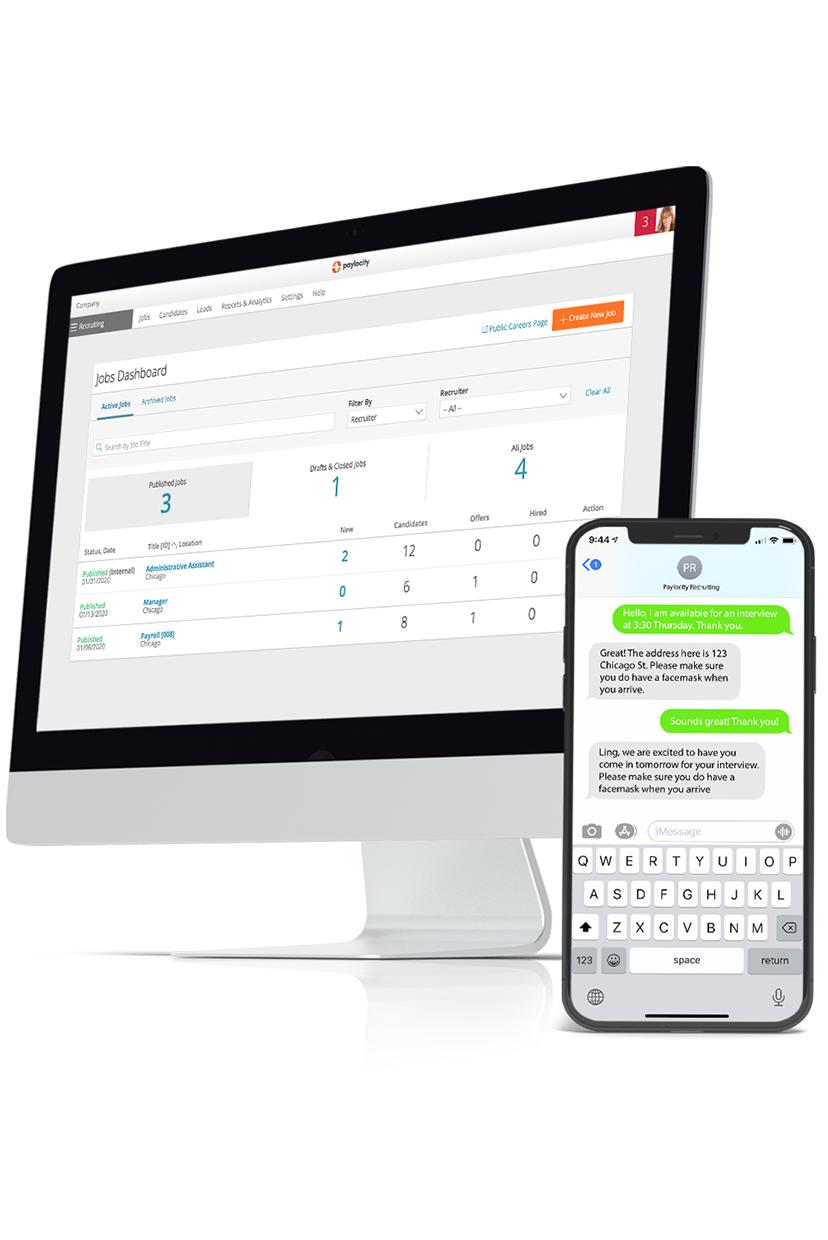Cost Per Hire
Summary Definition: A recruiting and HR metric that indicates the average amount a company spends to attract and hire a new employee.
What is Cost Per Hire?
Cost per hire (CPH) is a recruiting metric that indicates the average amount a company spends on attracting and recruiting a new employee.
It considers multiple data points, such as time spent on outreach, cost of recruiting technology, and payments to talent agencies. However, it doesn’t typically include onboarding activities, as those are considered post-hire training expenses.
While a high CPH isn’t necessarily a bad thing, recruiters should be able to answer the “why” behind it. Doing so not only helps set a baseline, but also creates measurable action items to reduce it.
Key Takeaways
- Cost per hire (CPH) tells you the average amount being spent to hire a new employee, including external hiring agency and recruiting technology costs, as well as time spent evaluating candidates.
- To calculate your CPH, you need to know your internal and external recruiting costs and how many people you’ve hired.
- An effective way to reduce high CPH rates is by investing in the right software, such as a talent management system.
Why is Cost Per Hire Important?
CPH indicates if a company is getting a good return on investment (ROI) from its recruiting efforts. It also helps determine the right recruitment budget for the company’s goals.
For example, a CPH analysis may reveal overspending on external recruitment agencies compared to in-house recruitment. Therefore, shifting those funds to the internal team could lower your overall CPH.
Companies may even break down CPH by gender, ethnicity, and so on as part of diversity initiatives. This data may reveal hiring challenges from a certain population segment and trigger conversations to address them.
Cost isn't everything, though. For a complete picture of your recruitment efforts, you’ll need to use it alongside other metrics, like time to hire and quality of hire.
For example, your CPH might be high, but your quality of hire might be too. In this case, lowering your CPH may also lower the quality of your candidates.
How to Calculate Cost Per Hire
To calculate CPH, you need to know how much you've spent on recruitment over a specific period. This includes your internal and external recruiting costs. Internal costs are the money you spend on recruitment in-house, such as:
- Your talent acquisition team (e.g., salaries, benefits, training, etc.)
- Office stationery and hardware
- Travel
- In-house software
- Interviews
- Employee referral bonuses
External costs are anything you spend on outside vendors or activities, including:
- Employer branding
- Recruitment agency fees
- Candidate testing (e.g., aptitude tests, assessment centers, etc.)
- Advertising
- Candidate vetting (e.g., drug tests, background checks, etc.)
- Software subscriptions (including talent management software)
- Relocation expenses
You also need to know how many people you've hired during this period. This can include internal and external hires, freelancers, and full-time and part-time employees.
With this data in hand, the CPH formula is your internal and external costs divided by your number of hires.
For example, imagine your monthly internal recruiting costs were $15,000 and your external costs were $25,000. During that month, you hired 10 people. Your CPH would be $4,000 ([$15,000 + $25,000] / 10).
Cost-Per-Hire Calculation
(Internal costs + External costs) / Number of hires
Example: ($15,000 + $25,000) / 10 = $4,000
What is a Good Cost Per Hire?
According to the Society for Human Resource Management (SHRM), the average CPH rate in the United States is $4,683.
Many factors, however, influence CPH, including industry, job level, etc. For example, the average CPH for executive positions is $28,329, which is around six times higher than non-executive positions.
Cost Per Hire by Industry
The average CPH by industry ranges from around $1,000 to over $6,000.
| Industry | Average CPH |
| Accommodation and food service/arts/entertainment/ recreation | $1,070 |
| Manufacturing | $3,497 |
| Public administration/education | $4,160 |
| Information/finance and insurance/real estate | $4,173 |
| Construction/utilities/agriculture/mining | $4,371 |
| Wholesale trade/retail trade/transportation and warehousing | $4,705 |
| Healthcare and social services | $4,770 |
| Administrative support/other services | $6,338 |
| Professional, scientific, and technical services/communication | $6,464 |
Source: SHRM Benchmarking Services
How to Improve Your Average Cost per Hire
While a high CPH sometimes is necessary, there are ways you can reduce it without compromising your recruitment efforts.
One popular method is to encourage employee referrals by using incentives. For example, an employee receives $500 for referring a candidate who's eventually hired.
Another solution in investing in software, like Paylocity’s talent management system. These kinds of systems automate many functions of the recruiting cycle, saving recruiters time on mundane administrative tasks.

Hire Smarter
Finding the right talent for your team can be challenging in today’s market. But with the right tools, it doesn’t have to be a strain on your internal resources as well. Our recruiting platform streamlines the process, bringing you an intuitive way to search for and engage with top candidates. With communication methods like texting and video, and data that helps you track progress, attracting and winning has never been easier.